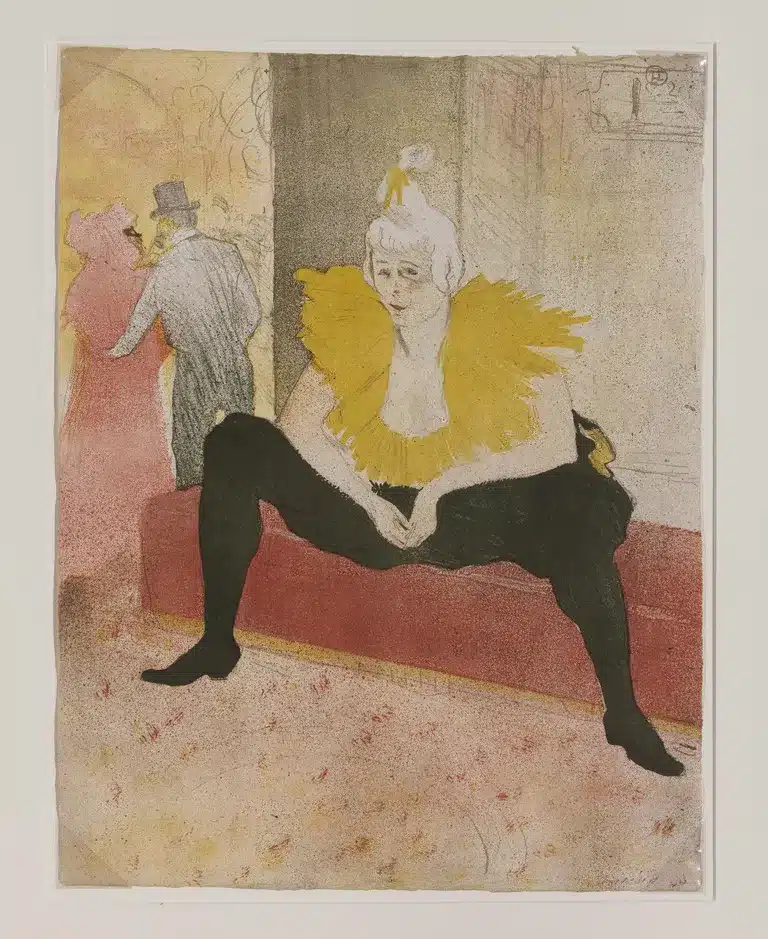A journey through the Paris of the Belle Époque at Museo degli Innocenti in Florence
Henri de Toulouse-Lautrec remains the emblematic artist of the Paris Belle Époque, his works as instantly recognizable today as they were shocking in their time. Small in stature but vast in vision, armed with a brush and lithograph, he captured all the light, glitter and grit of Paris at the end of the 19th century. Toulouse-Lautrec – A Voyage in Paris of the Belle Époque runs from September 27, 2025 to February 22, 2026, on exhibit at the Museo degli Innocenti in Piazza Santissima Annunziata.

Few people would hold the gaze of a man so altered, wracked by illness and disease. Born into a provincial noble family in the south of France, he demonstrated a breathtaking natural gift for art as a toddler. Toulouse-Lautrec battled the disease that came to be named for him – Toulouse-Lautrec Syndrome, a rare genetic disorder that left him physically diminutive for all his life. His parents supported and nourished his gifts, along with his move to Paris to pursue the life he dreamed of.
Toulouse-Lautrec followed his passions in life even as he was wracked by repeated and grave health crises. Prior to his artistic career, his first love was cuisine and he reveled in hosting his friends for elaborate dinners staged by his culinary alter ego, “Monsieur Momo.” His experimentation in the kitchen was repeated in his art experiments with color, technique, and style. Influenced by the Japanese prints then in vogue across Europe, Toulouse-Lautrec diluted oil paint to create semi-transparency, allowing the canvas to show through and contributing to a sense of spaciousness and immediacy, delighted both himself and the public with the result.

“As in painting, there is no art in cooking that is not also invention.”
Henri de Toulouse-Lautrec
Toulouse-Lautrec’s signature crachis is a lithographic technique (in French, “spit”) where ink is spattered from a brush drawn over a screen and onto the printing surface, creating a dusting of color to achieve atmospheric effects, modulate color, and add texture to the art. Other areas of the exhibit explain the colors, tools and products used by the artist, showing examples of not only brushes and pigments but also an entire period lithographic press similar to the one Toulouse-Lautrec would have used to make his famous posters, on loan for the show from the local Il Bisonte press in the Palazzo Serristori.
“When my pencil moves it is necessary to let it go. Nothing more!”
Henri de Toulouse-Lautrec
His insecurity about his appearance barred him from the demimonde and Parisian high society and led to the hills and cobbled streets, the bars and brothels of Montmartre – the quintessential monde de la nuit of Belle Époque Paris.
Mid-exhibit, patrons are invited to sit at a simulated Montmartre café wallpapered in vintage life-size photographs, with miniature bistro tables and chairs, in front of a well-lit stage where videos of contemporaneous can-can dancers fill the screen. Alas, there is no table service, but if there were, surely the Tremblement de Terre (the “Earthquake”) would be on the drink list, Toulouse-Lautrec’s signature cocktail of equal parts absinthe and cognac.
After absinthe, the smell he liked best was that of printing ink.
Jószef Rippl-Rónai
Toulouse-Lautrec took art from life. The further he explored the limits of Parisian nightlife, the more frequently appeared his renditions of the dancers and performers whom he befriended along the way: Jane Avril, La Goulue (Louise Weber), May Milton, Marcelle Lender, and his lover, Suzanne Valadon, along with his best-known patron, Aristide Bruant.
Toulouse-Lautrec suffered tremendously from both disease and alcoholism as he repudiated love and sought to ease his pain. His last years were spent in and out of hospitals, undergoing treatments harsh enough to shatter anyone’s confidence. Nonetheless, he continued to create prodigious works of art, notably his “Au Cirque” series.

He was brutal with himself; how could he not be so with others? He was an unforgiving observer, but his paintbrush did not lie.
Félix Fénéon
Produced by Arthemisia, the exhibit blends aesthetics with approachable scholarship in a multimedia format. Those who may know Toulouse-Lautrec only from the continuing popularity of his posters depicting Parisian nightlife receive a basic primer on his facts at the start of the exhibit, then progress into a gallery of art and decorative art indicative of the Belle Époque, including graceful furniture and Tiffany lamps. Vintage video makes regular appearances, transporting the visitor to the streets of Paris at the end of the 19th century with corseted and bustled women, governesses with their young charges, and men in top hats at the edges of the Tuileries or the Jardins du Luxembourg.

In spite of his brief, fraught life, and the many crises that interrupted his artistic trajectory, the signature style of Toulouse-Lautrec today is instantly recognizable, a testimony to the success of his daring and experimentation. The style shines through. Art was his panacea, his one true constant. Yet brothels, dancehalls, prostitutes, and absinthe also offered temporary refuge – a futile bulwark against a life marked by both privilege and hardship. The art, ever eternal, remains, and the art of Toulouse-Lautrec speaks to us even now.
Don’t miss this exquisite multimedia exhibit, an opportunity within Florence to slip into the Belle Époque of Paris, on exhibit at the Museo degli Innocenti in Piazza Santissima Annunziata in central Florence from September 27 to February 22, 2026.








